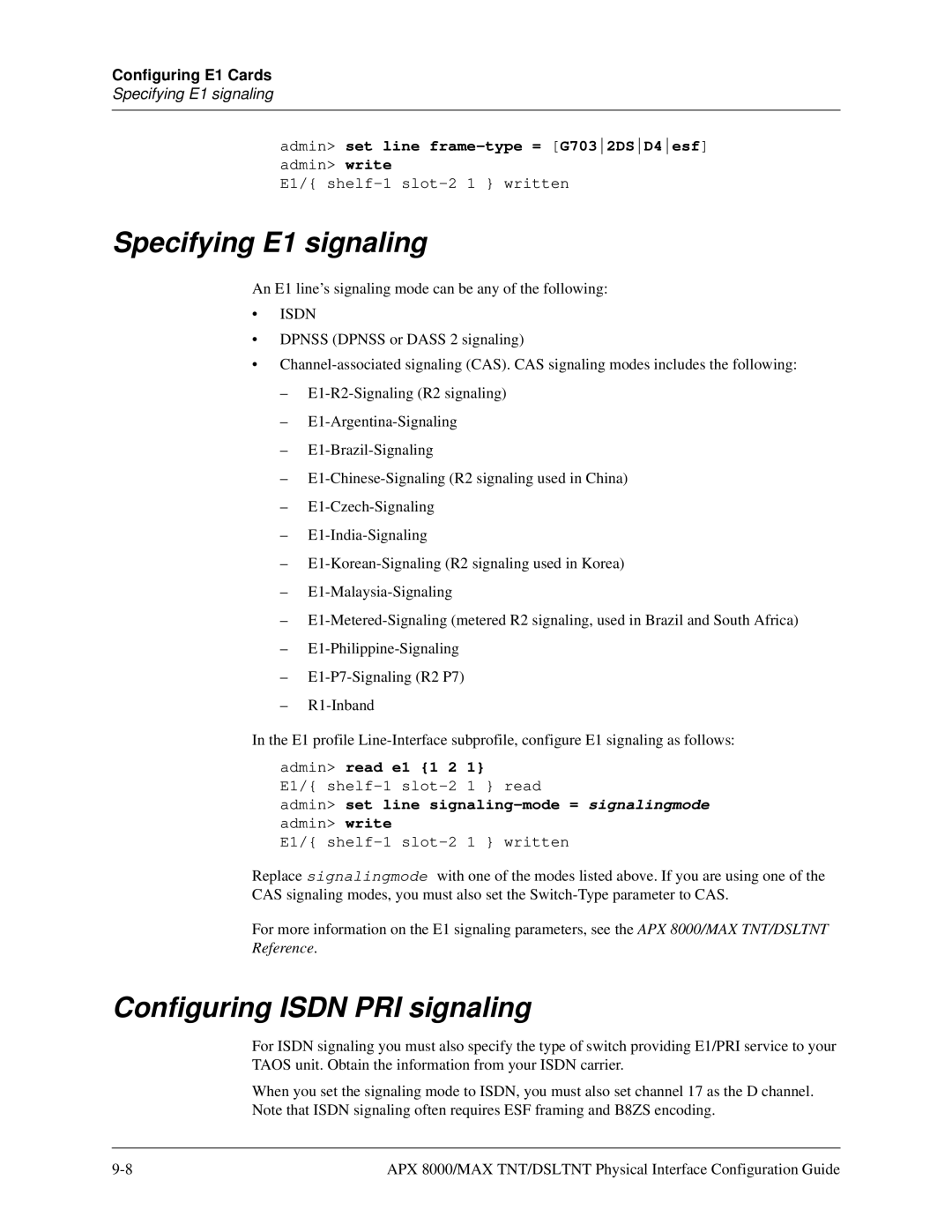
Configuring E1 Cards
Specifying E1 signaling
admin> set line frame-type = [G7032DSD4esf]
admin> write
E1/{
Specifying E1 signaling
An E1 line’s signaling mode can be any of the following:
•ISDN
•DPNSS (DPNSS or DASS 2 signaling)
•
–
–
–
–
–
–
–
–
–
–
–
–
In the E1 profile
admin> read e1 {1 2 1}
E1/{
admin> set line signaling-mode = signalingmode admin> write
E1/{
Replace signalingmode with one of the modes listed above. If you are using one of the CAS signaling modes, you must also set the
For more information on the E1 signaling parameters, see the APX 8000/MAX TNT/DSLTNT Reference.
Configuring ISDN PRI signaling
For ISDN signaling you must also specify the type of switch providing E1/PRI service to your TAOS unit. Obtain the information from your ISDN carrier.
When you set the signaling mode to ISDN, you must also set channel 17 as the D channel. Note that ISDN signaling often requires ESF framing and B8ZS encoding.
APX 8000/MAX TNT/DSLTNT Physical Interface Configuration Guide |
